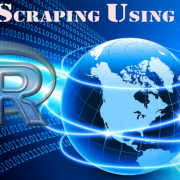Determining Your Data Pipeline Architecture and Its Efficacy
Data analytics has become a central part of how many businesses operate. If you hope to stay competitive in today’s market, you need to take advantage of all your available data. For that, you’ll need an efficient data pipeline, which is often easier said than done.
If your pipeline is too slow, your data will be all but useless by the time it’s usable. Successful analytics require an optimized pipeline, and that looks different for every company. No matter your specific circumstances, though, a traditional approach will result in inefficiencies.
Creating the most efficient pipeline architecture will require you to change how you look at the process. By understanding each stage’s role and how they serve your goals, you can optimize your data analytics.
Understanding Your Data Needs
You can’t build an optimal data pipeline if you don’t know what you need from your data. If you spend too much time collecting and organizing information you won’t use, you’ll take time away from what you need. Similarly, if you only work to meet one team’s needs, you’ll have to go back and start over to help others.
Data analytics involves multiple stakeholders, all with individual needs and expectations that you should consider. Your data engineers need your pipeline to be accessible and scalable, while analysts require visual, relevant datasets. If you consider these aspects from the beginning, you can build a pipeline that works for everyone.
Start at the earliest stage — collection. You may be collecting data from every channel you can, which could result in an information overload. Focus instead on gathering things from the most relevant sources. At the same time, ensure you can add more channels if necessary in the future.
As you reorganize your pipeline, remember that analytics are only as good as your datasets. If you put more effort into organizing and scrubbing data, helpful analytics will follow. Focus on preparing data well, and the last few stages will be smoother.
Creating a Collaborative Pipeline
When structuring your pipeline, it’s easy to focus too much on the individual stages. While seeing things as rigid steps can help you visualize them, you need something more fluid in practice. If you want the process to run as smoothly as possible, it needs to be collaborative.
Look at the software development practice of DevOps, which doubles a team’s likelihood of exceeding productivity goals. This strategy focuses on collaboration across separate teams instead of passing things back and forth between them. You can do the same thing with your data pipeline.
Instead of dividing steps between engineers and analysts, make it a single, cohesive process. Teams will still focus on different areas according to their expertise, but they’ll reduce disruption by working together instead of independently. If workers can collaborate along every step, they don’t have to go back and forth.
Simultaneously, everyone should have clearly defined responsibilities. Collaboration doesn’t mean overstepping your areas of expertise. The goal here isn’t to make everyone handle everything but to ensure they understand each other’s needs.
Eliminating the time between steps also applies to your platform. Look for or build software that integrates both refinement and data preparation. If you have to export data to various programs, it will cause unnecessary bottlenecks.
Enabling Continuous Improvement
Finally, understand that restructuring your data pipeline isn’t a one-and-done job. Another principle you can adopt from DevOps is continuous development across all sides of the process. Your engineers should keep looking for better ways to structure data as your analysts search for new applications for this information.
Make sure you always measure your throughput and efficiency. If you tweak something and you notice the process starts to slow, revert to the older method. If your changes improve the pipeline, try something similar in another area.
Optimize Your Data Pipeline
Remember to start slow when optimizing your data pipeline. Changing too much at once can cause more disruptions than it avoids, so start small with an emphasis on scalability.
The specifics of your pipeline will vary depending on your needs and circumstances. No matter what these are, though, you can benefit from collaboration and continuous development. When you start breaking down barriers between different steps and teams, you unclog your pipeline.






 Image Source: Pexels
Image Source: Pexels


Leave a Reply
Want to join the discussion?Feel free to contribute!